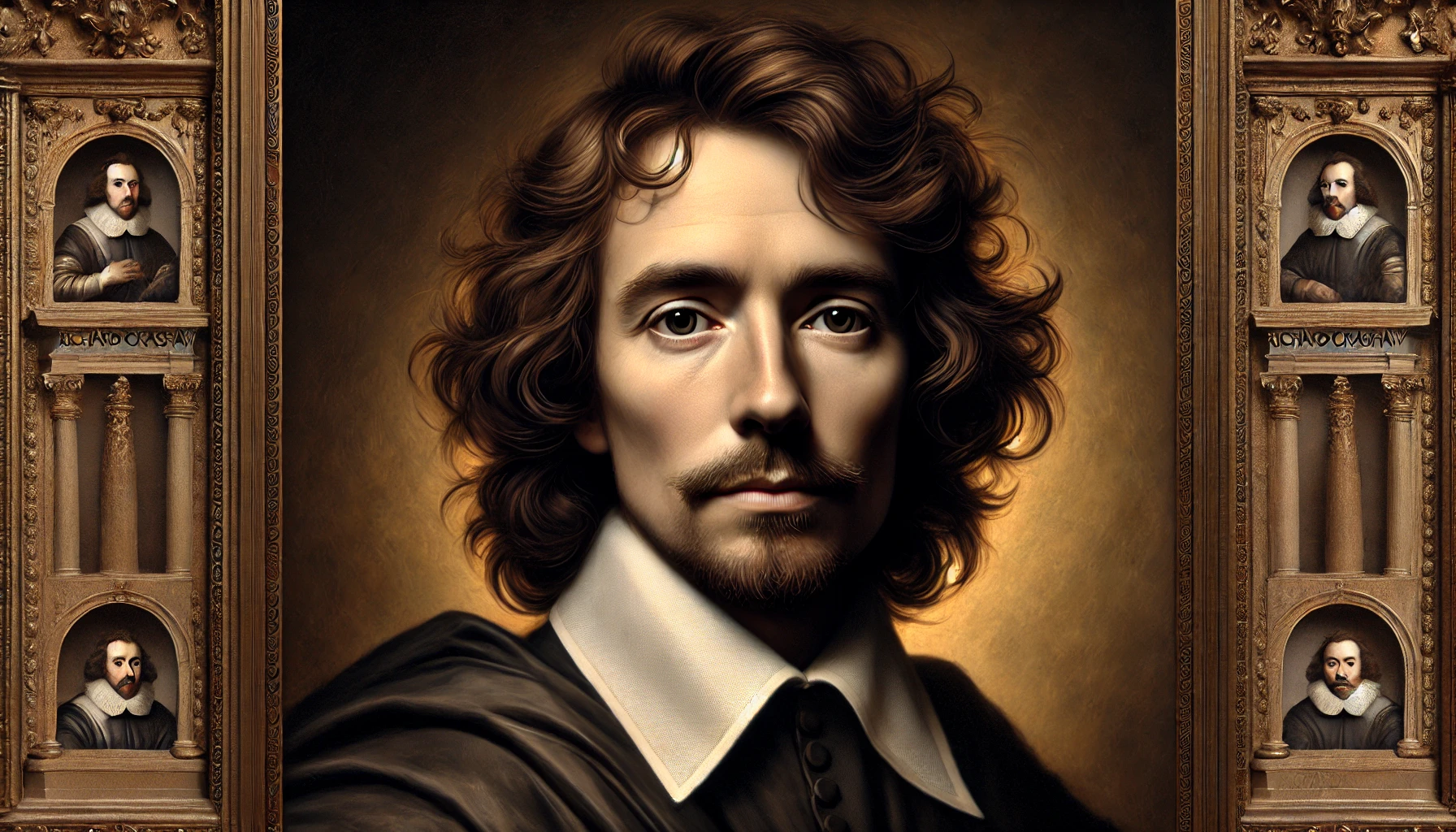Introduction
Richard Crashaw (c. 1613–1649) was an English poet associated with the Metaphysical and Baroque traditions. Known for his flamboyant imagery, emotional intensity, and religious fervor, Crashaw’s work bridges English devotional poetry and Continental Catholic mysticism. His conversion to Catholicism deeply influenced his later writings.

Life and Family
- Born: c. 1613 in London, England.
- Family:
- Father: William Crashaw, a Puritan clergyman and anti-Catholic writer.
- Mother: Died when he was very young; raised by his father.
- Education:
- Charterhouse School (1629).
- Pembroke College, Cambridge (BA 1634, MA 1638).
- Fellow at Peterhouse, Cambridge (1635–1643).
- Religious Journey:
- Initially Anglican, but influenced by High Church Anglicanism.
- Converted to Catholicism (c. 1645) amid English Civil War turmoil.
- Exile & Later Life:
- Fled to France and later Italy due to anti-Catholic persecution.
- Served at the Santa Casa di Loreto shrine.
- Death: Died in 1649 (possibly from illness) in Loreto, Italy.
Literary Works and Career
Crashaw’s poetry is marked by:
- Sensuous, extravagant imagery (Baroque influence).
- Mystical religious devotion (influenced by St. Teresa of Ávila).
- Metaphysical wit but more emotional than Donne or Herbert.
Key Works & Publications
- Epigrammatum Sacrorum Liber (1634) – Early Latin religious epigrams.
- Steps to the Temple (1646, expanded 1648) – Main English collection, includes:
- The Flaming Heart (on St. Teresa of Ávila).
- A Hymn to the Name and Honor of Saint Teresa.
- The Weeper (on Mary Magdalene’s tears).
- Carmen Deo Nostro (1652, posthumous) – Expanded Catholic-themed poems.
Career Highlights
- Cambridge scholar and fellow (1630s).
- Exiled poet in Catholic Europe (1640s).
Qualifications & Positions
- Education: Cambridge (BA, MA).
- Professional Roles:
- Fellow at Peterhouse, Cambridge.
- Minor ecclesiastical roles in exile.
Notable Works List with Publication
Poetry Collections
- Steps to the Temple (1646, 1648) – Major devotional poems.
- Carmen Deo Nostro (1652) – Posthumous Catholic-themed edition.
Individual Poems
- The Flaming Heart (mystical ode to St. Teresa).
- The Weeper (extravagant meditation on Mary Magdalene).
- A Hymn to the Name and Honor of Saint Teresa.
- Wishes to His Supposed Mistress (secular love poem).
Legacy
- Considered the most Baroque of English poets (florid, emotional style).
- Influenced later Catholic writers like Gerard Manley Hopkins.
- Contrasted with Herbert’s simplicity—Crashaw embraced excess.